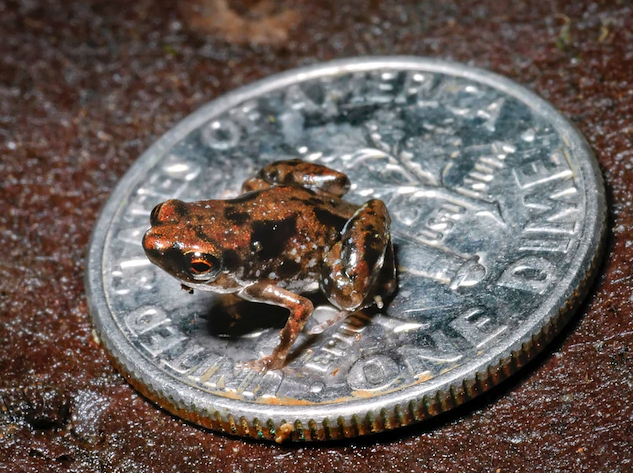Before you continue reading, I want you to know that this post *might* contain a bunch of facts you've already read.
Some context: I write a weekly series, published on Saturday mornings, where I round up a bunch of cool facts I learned that week. Then, at the end of every month, I take everything I learned and put it all into one convenient place for your reading pleasure — and that's what you're reading now. Here's the one I wrote in April.
The following facts are from:
SO, without further ado, here are 107 Things I Learned In May™️:
4. The water inside this vial is 1.6 billion years old. It was discovered inside an old mine on the Canadian Shield, which is an ancient geological formation that was part of the ocean floor many millions of years ago. Not only is this water teaching us about what life was like on Earth all those years ago, but it's also providing hope that a similar discovery — ancient, life-supporting water — could be found on Mars:

5. Goosebumps are typically an involuntary reaction that's triggered by such things as temperature or emotion. For some people, however, it's not involuntary at all. There's a phenomenon called Voluntarily Piloerection where a very small percentage of people can actually give themselves goosebumps on command. Some estimate that only 1 in 1,500 people possess this mysterious ability — do you?

8. This is Martin Laurello, who had various stage names such as "Revolving-head man," "the Human Owl," and "Bobby the Boy with the Revolving Head" due to his very unsettling ability to turn his head 180 degrees. He was also allegedly able to sip this beer with his head turned around:
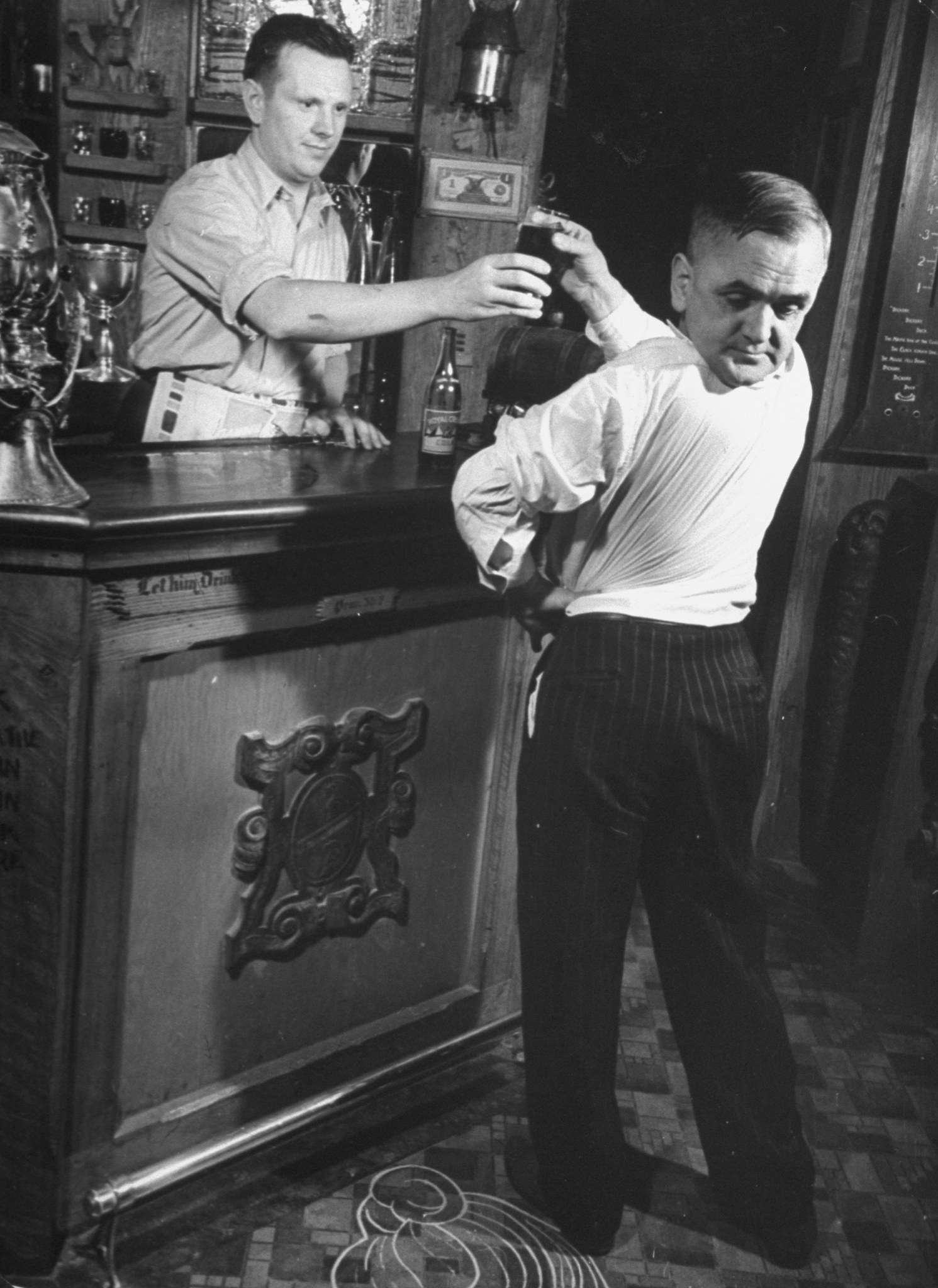
13. Last week, the Ingenuity helicopter made history by becoming the first aircraft to ever fly on Mars. Here's a photo Ingenuity took of the Perseverance rover during its historic flight:

24. A UK-based artist and musician named George Aquilla Hardy designed a photorealistic portrait of what George Washington might look like if he lived today, and it looks unbelievably real:

27. Robert Hanssen was a special agent for the FBI and a counterintelligence operative who turned out to be a double agent for the Soviet Union and arguably the biggest traitor in US intelligence history. For over two decades, he supplied the Russians with classified information in exchange for cash and diamonds — and some of the classified material he shared resulted in the arrest and execution of sources and spies who were living in the Soviet Union. Because he worked in counterintelligence, he was always privy to information that might incriminate him, which allowed him to stay one step ahead of investigators until he was finally caught in 2001. Hanssen was sentenced to life in prison without parole, where he remains to this day.
35. Cassowaries are one of the few birds who have been *definitively documented* as having killed humans. These highly territorial flightless birds are very large (the second heaviest bird on the planet) and very fast (they can reach speeds of 31 miles per hour, or 50 kilometers per hour). Their go-to attack is a powerful kick with their razor-sharp claws, and their ability to jump high into the air ensures that kick will land in the deadliest possible spot:

43. World-renowned cellist Yo-Yo Ma plays on a cello that's almost 300 years old. It was made in 1733 by Domenico Montagnana, who was regarded as one of the world's best designers of cellos and violins (but especially cellos) in his lifetime. Ma nicknamed the instrument "Petunia." It was valued at around $2.5 million more than a decade ago and may be worth far more today. Once, in 1999, Ma accidentally left the cello in a cab, but he eventually managed to track it down after what must have been a very stressful, nerve-racking search:

44. This is Timothy Evans. In 1949, Beryl Evans, Timothy's wife, and their 1-year-old daughter Geraldine were found murdered. Timothy was the primary suspect, and in 1950 he was found guilty of the crime and hanged...

...and this is John Christie, the Evans' neighbor. Christie was a chief witness for the prosecution in the trial, and his testimony led to the conviction and execution of Timothy Evans. It wasn't until three years after Evans' death that it was discovered that John Christie was actually a serial killer, and among his eight known victims were Beryl and Geraldine Evans. This tragic case would become a major factor in Great Britain's decision to abolish the death penalty. In the US, the death penalty is still used in 27 states, and a 2014 study concluded that 1 in 25 people on death row is innocent.
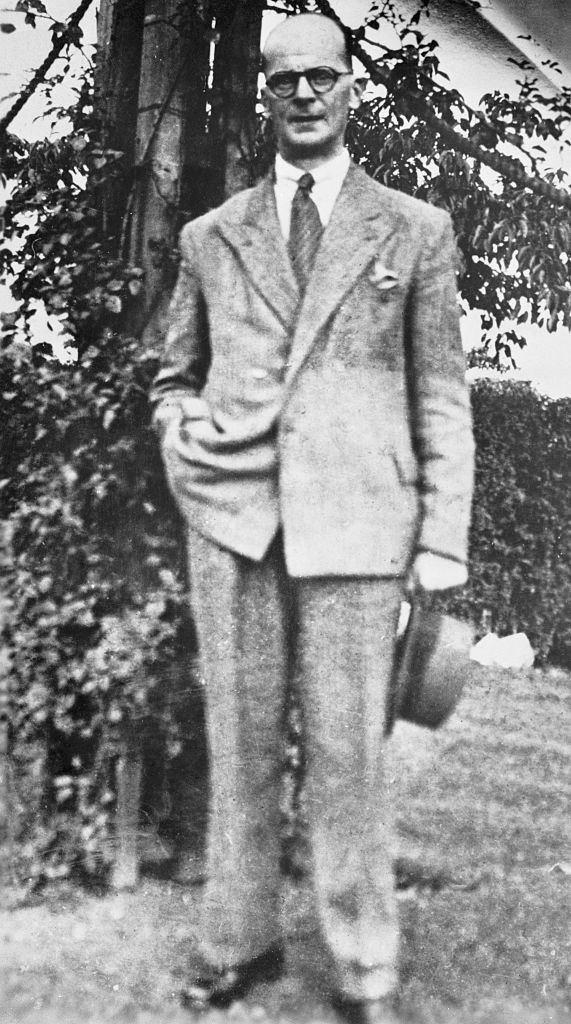
47. Nathan Reeves and his wife, Suzie Quintal, spent this past Christmas on Norfolk Island in Australia when, in an unlucky turn of events, Nathan lost his wedding ring while going for a swim. They reported the ring lost on some local Facebook pages, but there was little else they could do. Five months later, the ring actually turned up in the unlikeliest of places. A snorkeler and writer named Susan Prior spotted — and managed to photograph — a hapless mullet fish with Nathan's ring wrapped around its body:
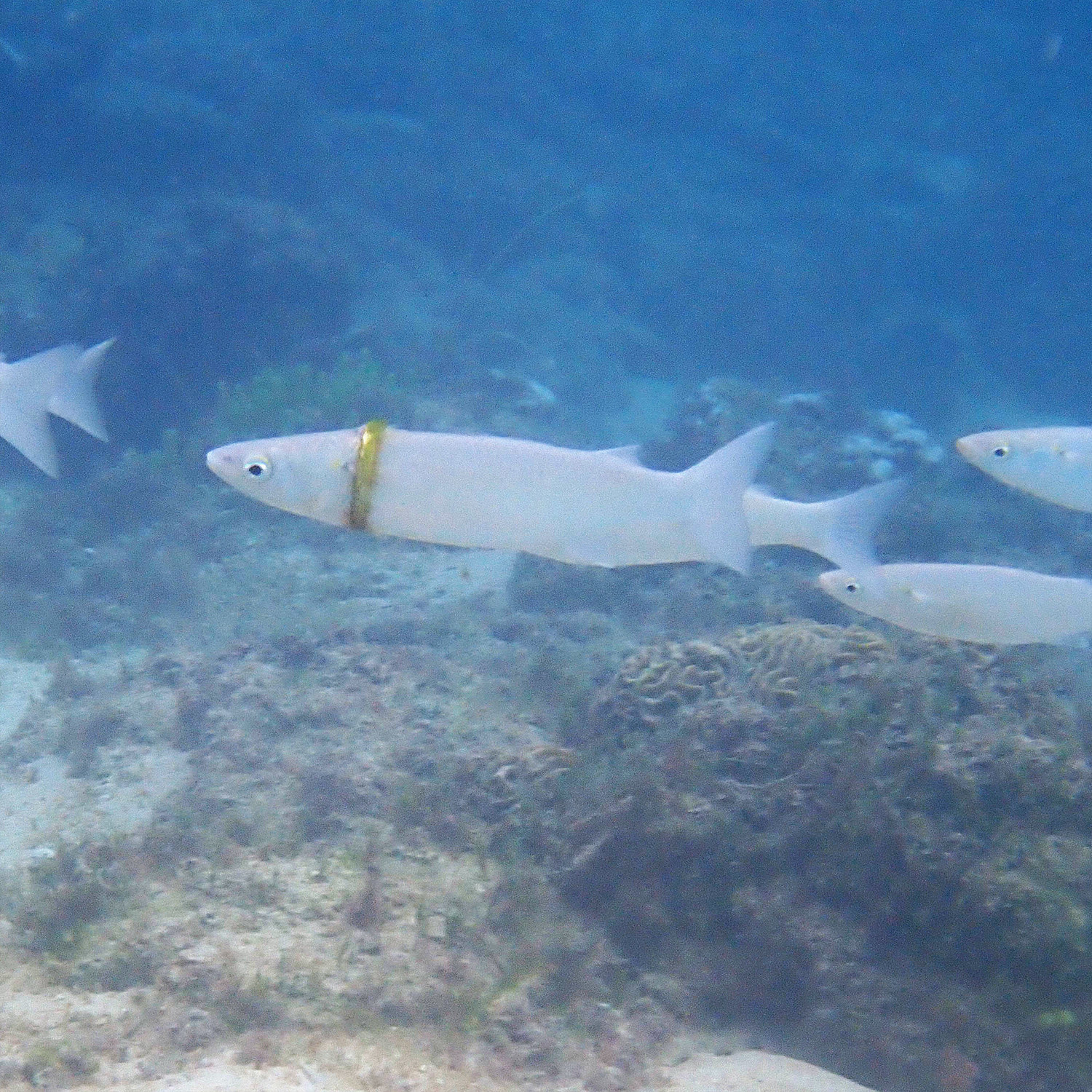
48. Susan spotted the fish with the gold ring in May, but in February she spotted other mullet fish wearing plastic rings (the ones that accompany twist-off caps on plastic bottles) like the one pictured below. In her blog she explains, "Mullet snuffle through the sand looking for food, making it so easy for a ring or hair tie to flip over their noses and get stuck." She hopes that this unlucky fish will inspire people to take greater care not to litter and to be more cautious with their belongings — oh, and regarding those pesky plastic rings, she recommends cutting them! It could save a mullet's life.
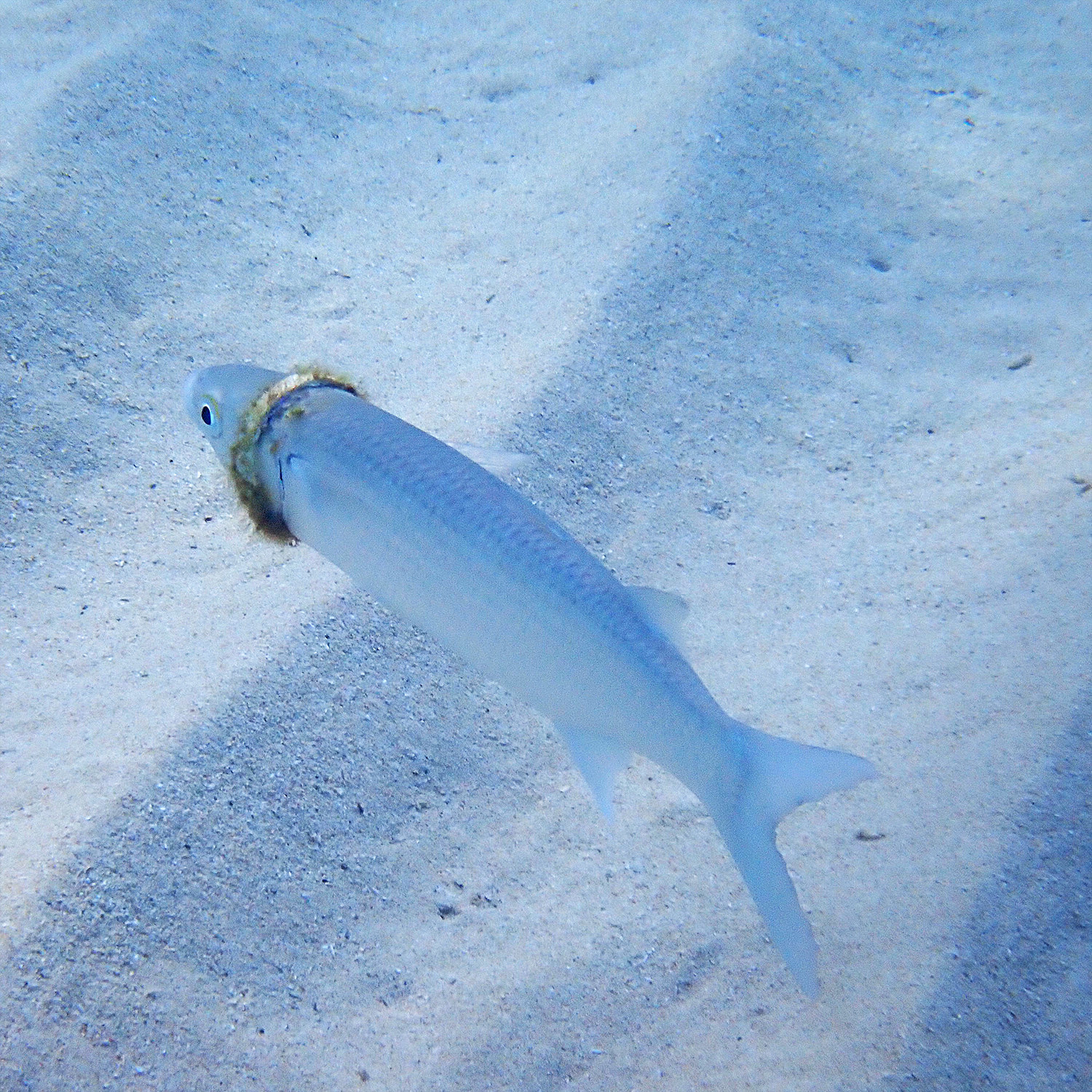
49. This recent photo of Mars sent from the Perseverance rover is breathtaking, incredible, and even a little bit terrifying. The hill in the distance is called "Santa Cruz":

50. Polaris, aka the North Star, isn't actually the brightest observable star in our night sky. In fact, it just barely cracks the top 50. It is, however, *4,000 times* brighter than our Sun, which just goes to show how insignificantly tiny our solar system is in the whole scope of the universe. Polaris is approximately 434 light-years from Earth, which means the light we're seeing when we look at it was generated around the same time that Shakespeare was writing his earliest known play, The Taming of the Shrew. For comparison, it only takes 8.3 minutes for the light that our Sun generates to reach Earth.

53. Tanitoluwa Adewumi started playing chess only three years ago while he was living in a homeless shelter in Manhattan. He and his family had just escaped religious persecution in Nigeria and arrived in the United States as refugees. Now, at the age of 10, he just earned the title of Chess Master* — less than 1% of rated players ever earn the title of Master. His next goal? To become the youngest Grandmaster ever, which he'll need to accomplish before he's 12 years and 7 months old if he's to best the current record holder:

55. Just in case you're wondering, a Lego brick can withstand a weight of 950 pounds (432 kilograms), which means you could stack 375,000 Lego bricks before the bottom brick would break. That Lego tower would be over two miles (3.5 kilometers) high.

59. Researchers recently discovered a giant species of saber-toothed cat that likely lived between 5 and 9 million years ago. They're now believed to be one of the biggest cats to ever roam the Earth — so big, in fact, that they may have hunted rhinos.
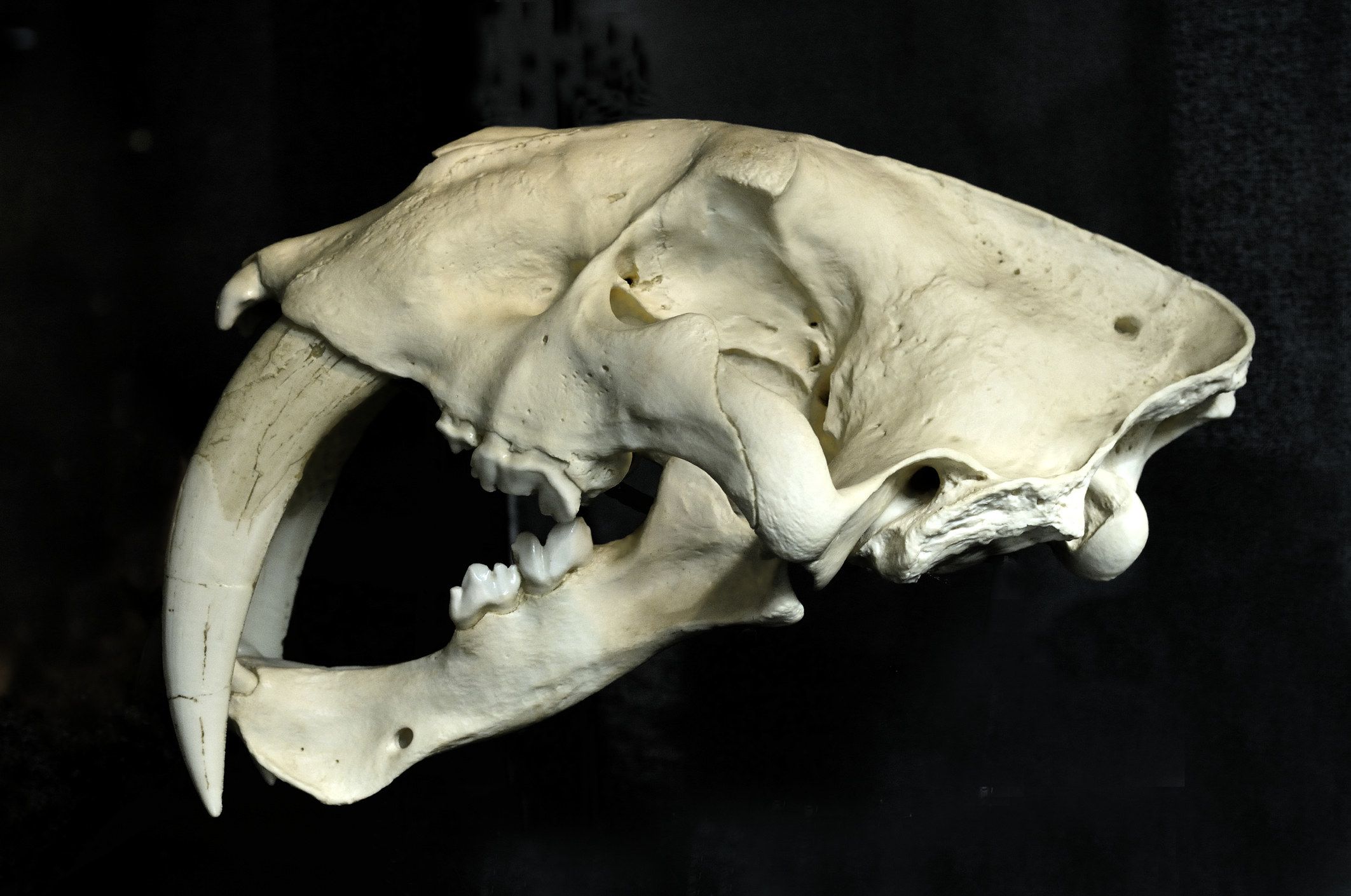
66. The notorious serial killer Ed Kemper is known to have murdered and mutilated at least 10 people — his grandparents, his mother, his mother's best friend, and six young women who attended college in Santa Cruz, California. Two things that set Kemper apart from other serial killers are his size (he's 6 feet 9 inches, or 205.7 centimeters) and his intellect (he allegedly has an IQ of 145). The latter allowed him to be extremely cunning and manipulative. He even befriended a group of police officers at a local bar during his killing spree — they'd affectionally refer to him as "big Ed" — and when Kemper finally decided to turn himself in for the murders, they thought he was joking.

67. The wreck of the Titanic is rapidly disappearing, and researchers believe that in about 20 to 30 years, it'll be gone entirely. The culprit? In 2010, a closer analysis of some earlier-collected samples turned up a brand-new species of rust-eating bacteria, aptly named Halomonas titanicae, and it's making a feast of the iconic ship. In 2019, the wreckage was visited for the first time in 14 years, and lo and behold, many portions of the ship that were once intact — like the officers' quarters — had collapsed entirely.

68. On March 18, 1937, a natural gas leak in the basement of the Consolidated School in New London, Texas, ignited an explosion so large that it was felt as far as 35 miles away. The school was completely leveled, and the blast killed almost 300 students and faculty — for context, New London only had a population of 1,200 people at the time. This catastrophe was so great that world leaders from all over wired their condolences to President Franklin D. Roosevelt. Even Adolf Hitler passed on "the German people’s sincere sympathy."

69. And this is William Estel Benson. He was a Consolidated School student at the time, and 24 years after the tragedy, he confessed to unscrewing the gas pipes underneath the school because, according to him, the principal busted him for smoking and he wanted to run up their gas bill. He allegedly knew details about the pipes that were never released to the public. He also admitted to living with guilt for all those years, in part because his sister died in the explosion. Not long after he made these claims, Benson hired a lawyer and then recanted his confession, saying, “I just wanted to play the big shot.” Eventually the case was closed, and he was never tried for sabotaging the pipes.
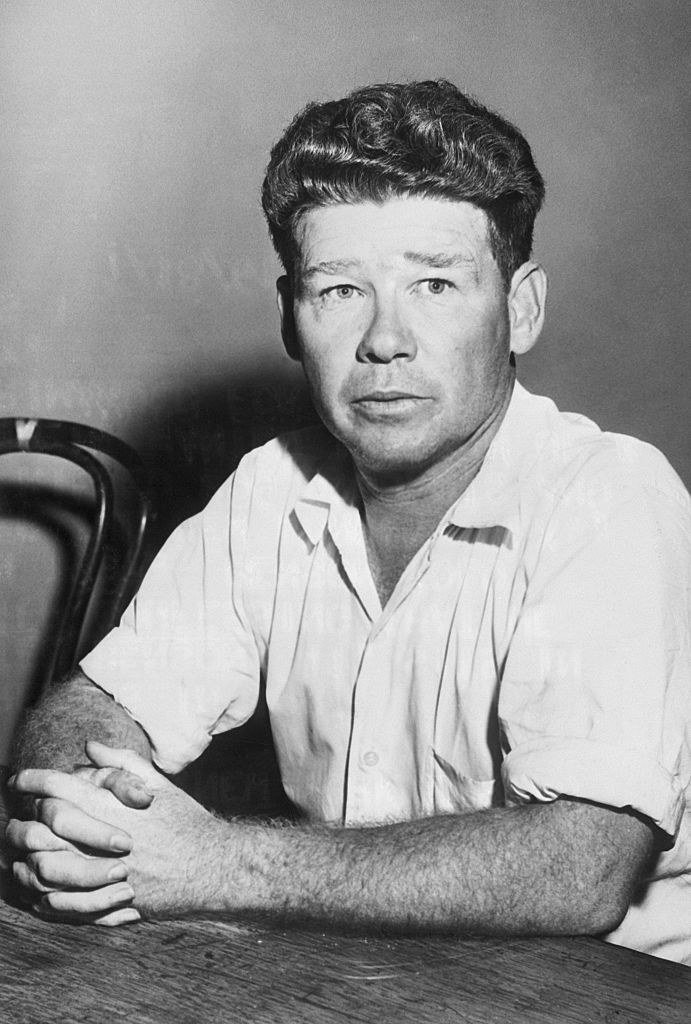
70. A recent study found that couples who sleep in the same bed are more well rested than people who sleep alone. The study looked at both married couples who co-sleep and unmarried people who don't, and concluded that the married couples experience much longer REM sleep than the unmarried people. Potential reasons for this? Shared body heat creates a consistent and reliable source of warmth. It could also have to do with the comfort and security that comes with having a loved one so close.

71. Muntazer al-Zaidi is an Iraqi journalist who made headlines in 2008 when he threw his shoes at then–US president George W. Bush. Less than a year later, in the Iraqi city of Tikrit, a monument was erected to honor al-Zaidi, and fittingly, it's a big shoe.

72. You have a 1 in 100 million chance of ever finding an albino lobster, making it far and away the rarest lobster in existence — much rarer than blue lobsters (1 in 2 million), yellow lobsters (1 in 30 million), and even split-colored lobsters (1 in 50 million). Despite these long odds, not one, but two albino lobsters were caught in a single week off the coast of Maine in 2014. One was sent to the Maine State Aquarium, and the other to a marine supply store with a large tank that displays local wildlife.
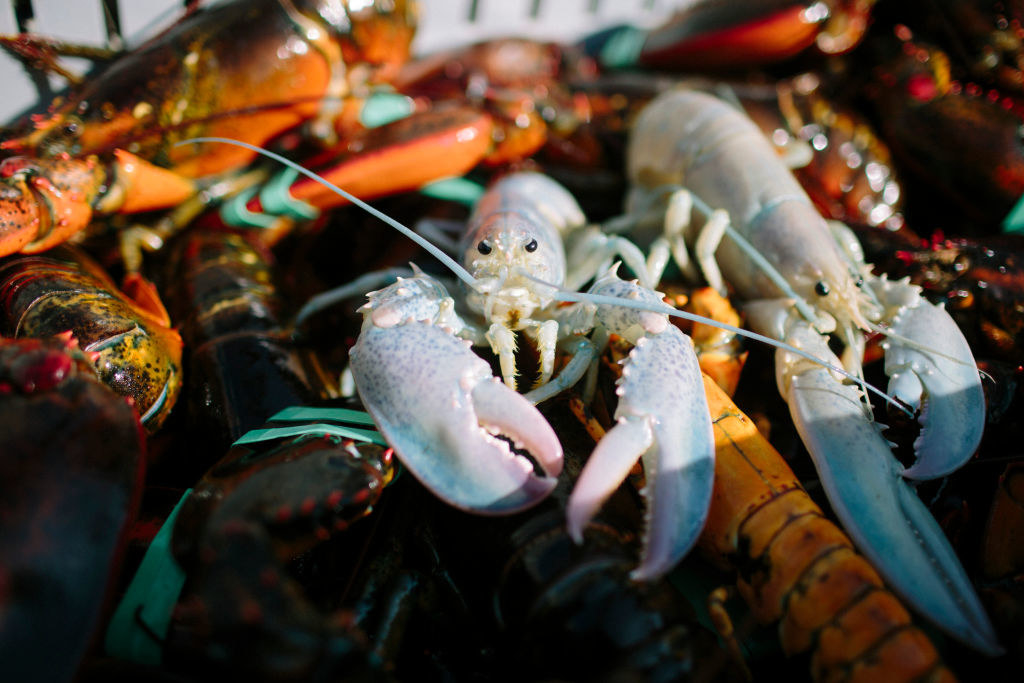
73. Roughly 15 million years ago, an asteroid struck in what is now Southern Germany, leaving behind a massive, 9-mile-wide crater. The impact also left behind plenty of suevite, which is a rock embedded with tiny fragments of crystals, glass, and even diamond. That same rock was used to build Nördlingen, the town that now sits in that crater, which means all of the original architecture in Nördlingen contains "millions of microscopic diamonds."

74. This is the giant golden-crowned flying fox, and it's one of the biggest bat species in existence. Only found in the Philippines, these large fruits bats are extremely rare — and they're only getting rarer as a result of deforestation and poaching. They're currently listed as critically endangered on the IUCN (International Union for Conservation of Nature) Red List of Threatened Species.
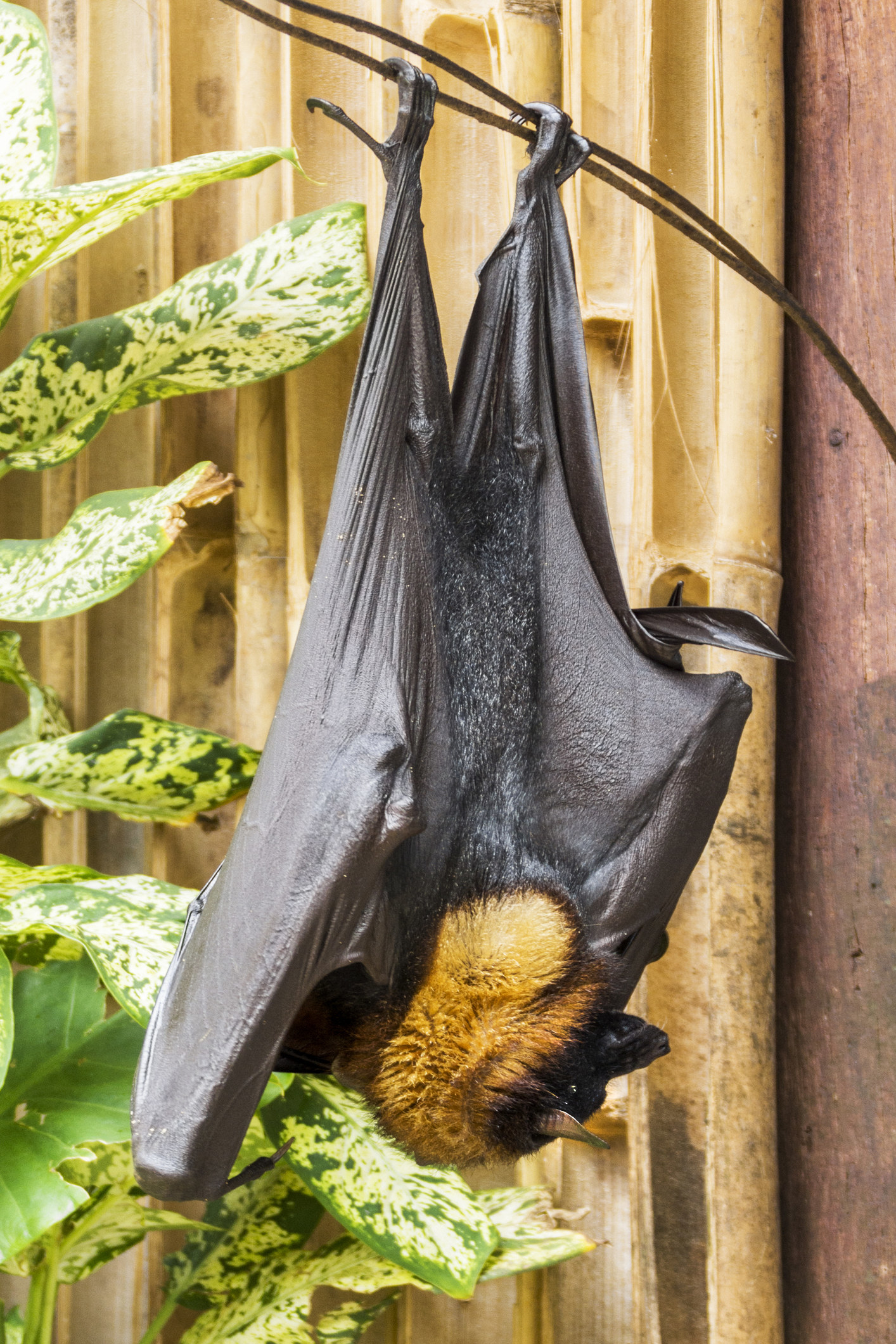
75. For much of World War II, no one really knew what the Nazis were up to in the small Polish town of Oświęcim — known to the Germans as Auschwitz. Witold Pilecki, a Polish army captain and a freedom fighter for the Polish resistance, was determined to find out. In September 1940, Pilecki allowed himself to be captured in Warsaw, arriving at Auschwitz not long after. He spent the next three years there collecting intel and sending messages to his superiors via prisoners he helped escape — all while doing hard labor on starvation rations. Thanks to Pilecki's efforts, the Allied forces learned early on what was truly taking place within the death camp's walls (though they sadly — and controversially — never took steps to hinder its supply lines). Then, in 1943, as willingly as he entered the camp, Pilecki left, escaping during the night with a group of inmates.
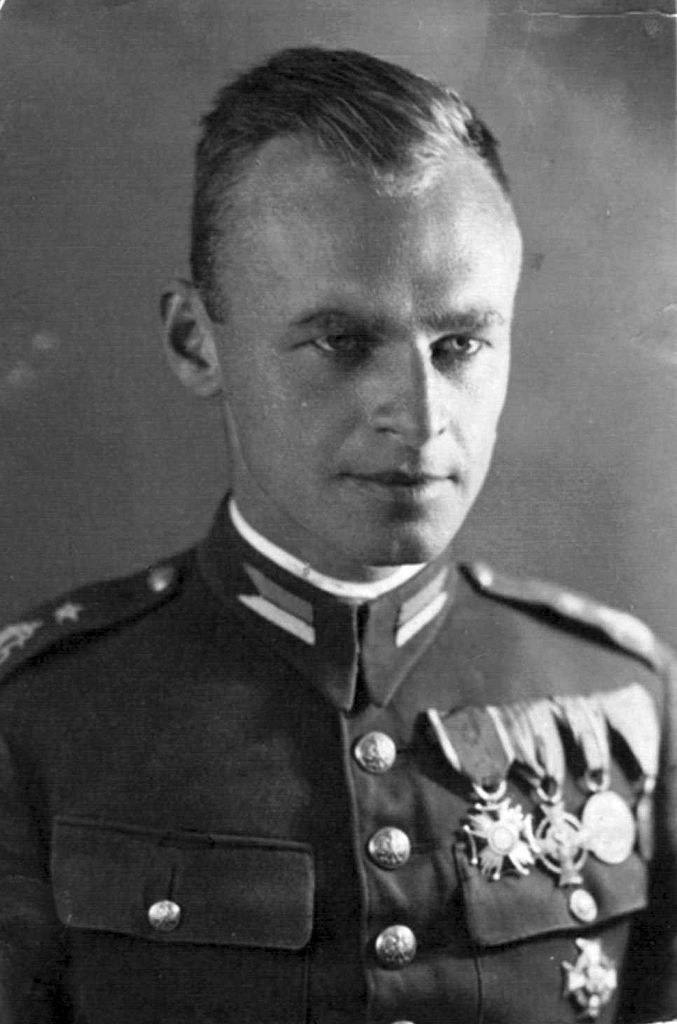
76. This is the wreck of the HMHS Britannic, which, along with the Olympic, was a sister ship of the Titanic. When World War I broke out, the Britannic was converted into a hospital ship. At full capacity, it could transport over 3,000 wounded soldiers. In 1916, a great and sudden explosion occurred at the bow of the ship — to this day, it's debated whether it was caused by a mine or a torpedo, but the consensus seems to be that it was a mine. The majority of the ship's passengers and crew survived, but one particularly grisly detail is that two lifeboats filled with passengers launched prematurely and without permission, and they were subsequently sucked into the spinning propellers and broken to bits.
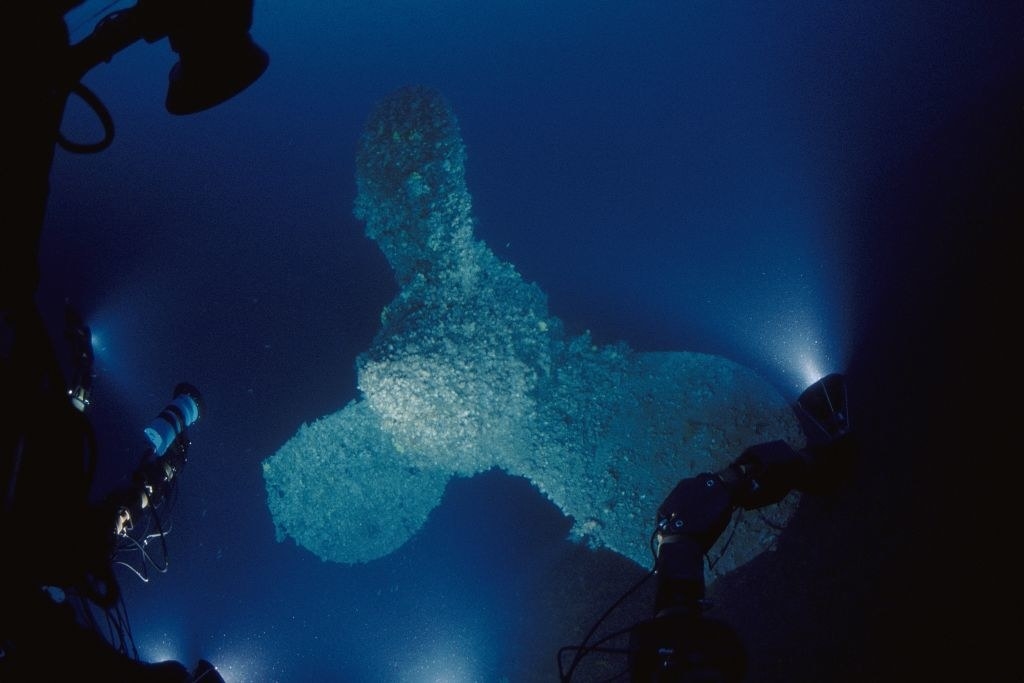
77. Erratic weather brought on by climate change is destroying 40,000-year-old cave art in Indonesia, the oldest such art ever discovered. It contains hand stencils (pictured below), animals, and a hunting scene that researchers believe is the first narrative ever recorded by humans.
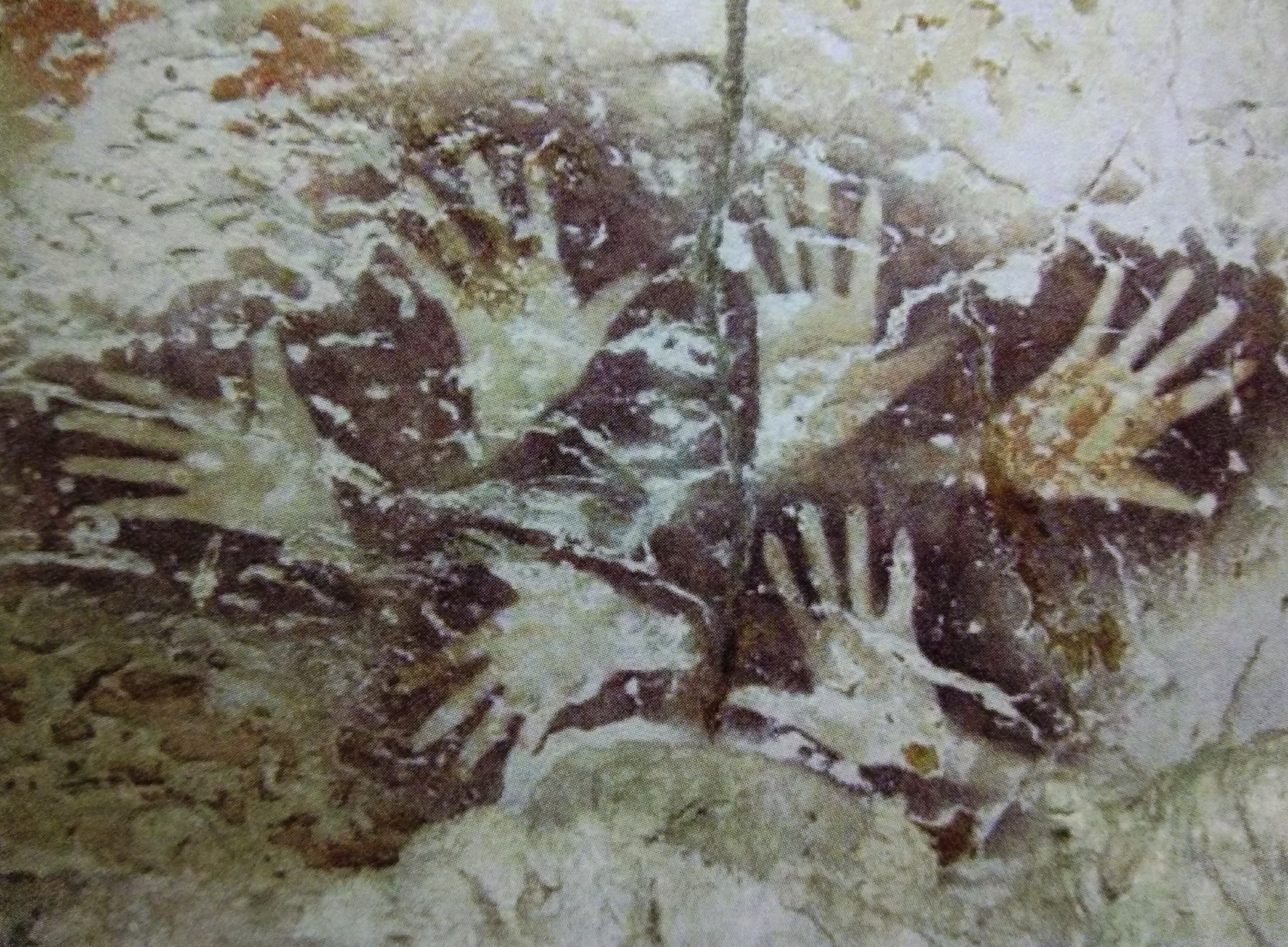
78. Bessie Coleman was the first Black woman, and the first Native American woman, in the United States to earn a pilot's license — but she didn't earn it in the United States. Racism and sexism were barriers that were preventing her from achieving her dreams, so she taught herself French and, in fall 1920, headed to France to pursue the opportunities that she was denied in her own country. In late spring of the following year, she earned an international pilot's license, which meant that she was licensed to fly anywhere in the world, including the United States.

79. In 2012, the long-lost remains of Richard III were found underneath a parking lot in Leicester, England. Over 500 years earlier, he became the last king of England to die in battle and was subsequently buried in an unmarked grave. Shakespeare was unforgiving in his depictions of Richard III, inaccurately describing him as "hunchbacked" and having "a limp and a withered arm," and portraying him as a ruthless, murderous villain. While he did have a somewhat severe case of scoliosis, which made his shoulders uneven, there's no historical evidence to support these depictions, and Shakespeare was likely trying to flatter Elizabeth I, whose family supplanted Richard III's family in the English monarchy.
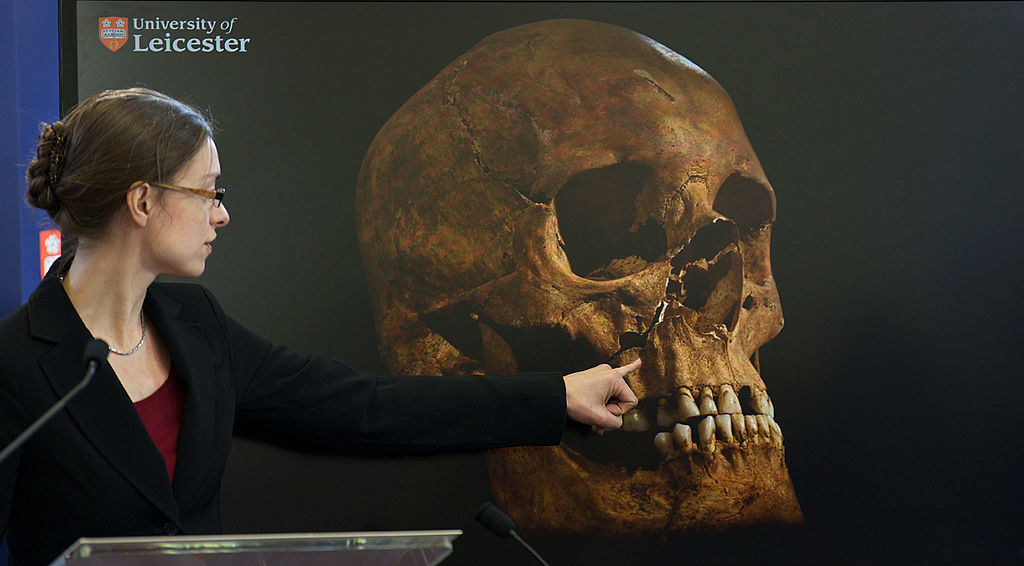
80. This strange little meteorite that was found on Mars is roughly the size of a golf ball. In the past, when a discovery like this was made, scientists back on Earth would be left to guess what the rock was made of. What makes this particular rock special — which they're now calling "egg rock" — is that it's the first rock on Mars to be studied using a laser-firing spectrometer, thanks to the Curiosity rover's ChemCam. This incredible tool determined that egg rock is made of...*drum roll, please*...iron, nickel, and phosphorus. Scientists claim that it may have been sitting on Mars for millions of years.

81. May 18 was the 41st anniversary of the Mount St. Helens eruption in which 57 people died and 135 square miles of forest were completely flattened. Here's what it looked like in 1958, 22 years before it erupted, versus what it looks like today.
82. A photographer named Robert Landsburg was 7 miles away from Mount St. Helens when it blew. As a towering wall of ash sped toward him, he knew there was no way of escaping alive. In his final moments, he snapped a few more shots (pictured below), rewound the film, and lay on top of the camera to protect it. Landsburg, along with the footage he sacrificed his body to save, wouldn't be found for 17 days.

83. And here's an aerial shot of the eruption and its 15-mile-high plume. Scientists believe Mount St. Helens is still a threat, and in 2005 it was deemed the second-most-dangerous volcano in the United States behind the Kīlauea volcano in Hawaii.

84. This piece of amber contains a 99-million-year-old dinosaur tail so perfectly preserved that its soft tissue and bones are still intact, and it's coated in feathers. Though existing fossil records have already pointed to the existence of feathered dinosaurs, this tail is the most concrete evidence ever discovered.
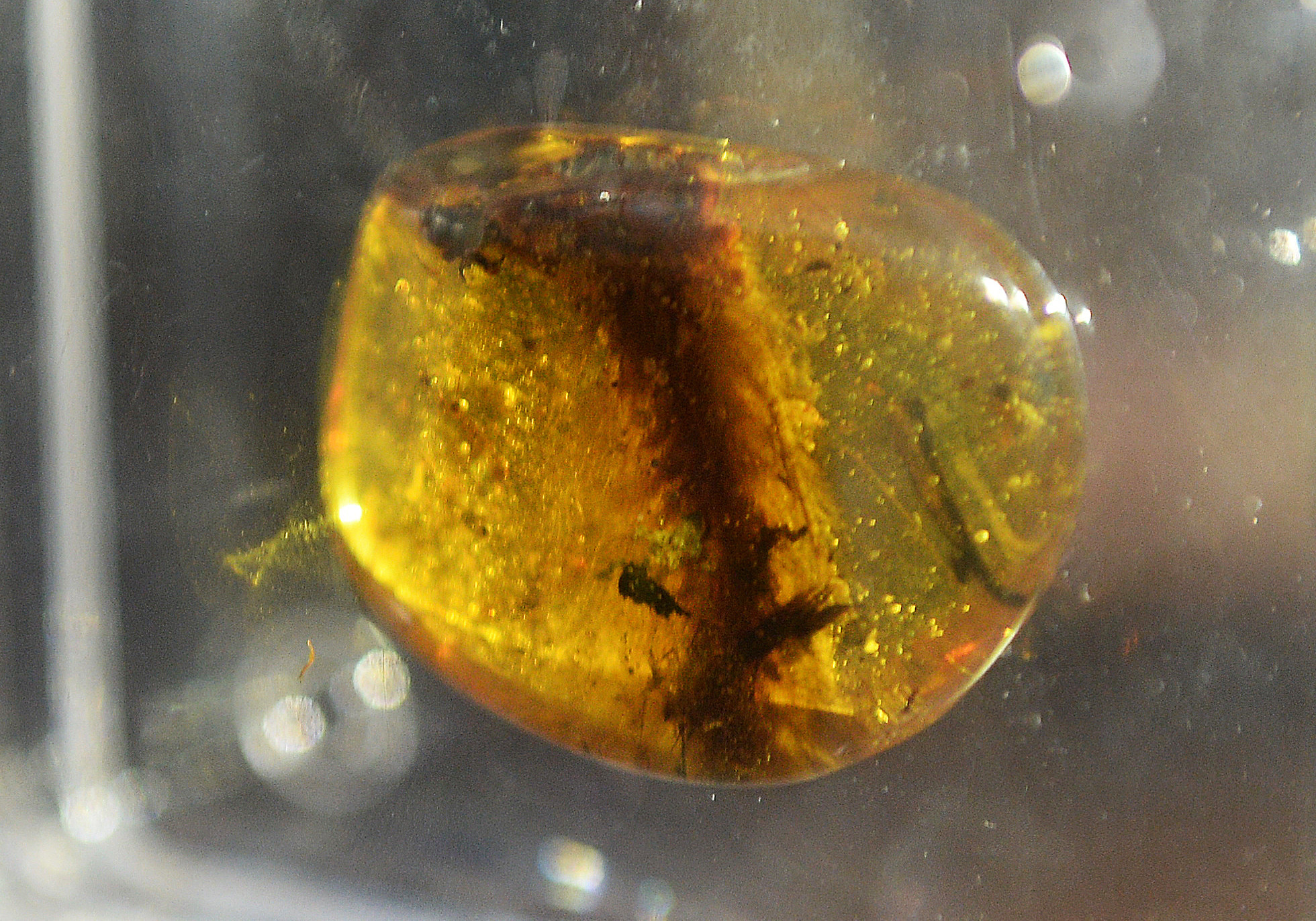
85. Scientists in Costa Rica have devised a plan — planting fake eggs loaded with GPS trackers — to combat the illegal trade of sea turtle eggs and protect the seven endangered sea turtle species that nest in Central America. The hope is that these fake eggs will make their way onto the black market and expose the whole supply chain.

86. This is the glass frog. These little guys are most notable for their translucent underbellies, which allow you to see most of their skeleton and vital organs.
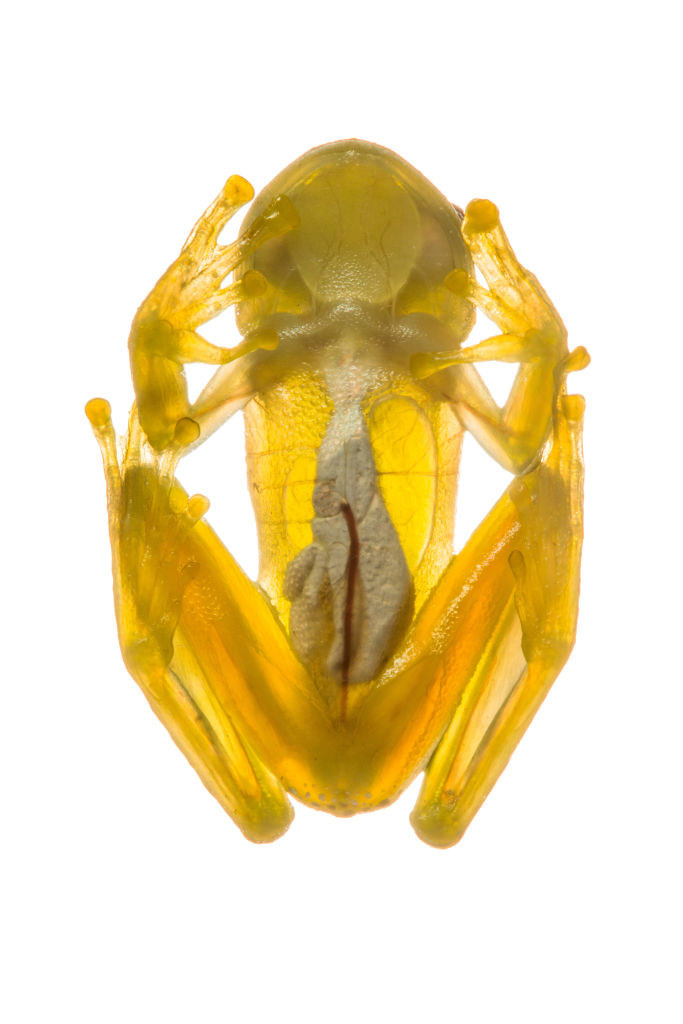
87. This man was the inspiration for Norman Bates from Psycho, Buffalo Bill from Silence of the Lambs, and Leatherface from The Texas Chainsaw Massacre — to name only a few — and arguably an entire sub-genre of grotesque horror films that these iconic characters would come to represent. His name was Ed Gein, aka the Butcher of Plainfield — aka the Plainfield Ghoul. Gein would only confess to (and be convicted of) two murders, though he's believed to be responsible for a handful of others. While two murders might not seem like a whole lot in the wider context of American true crime, it's what investigators found on his property and inside his house that established Gein's legacy as being one of the most depraved and nightmarish figures in American criminal history...
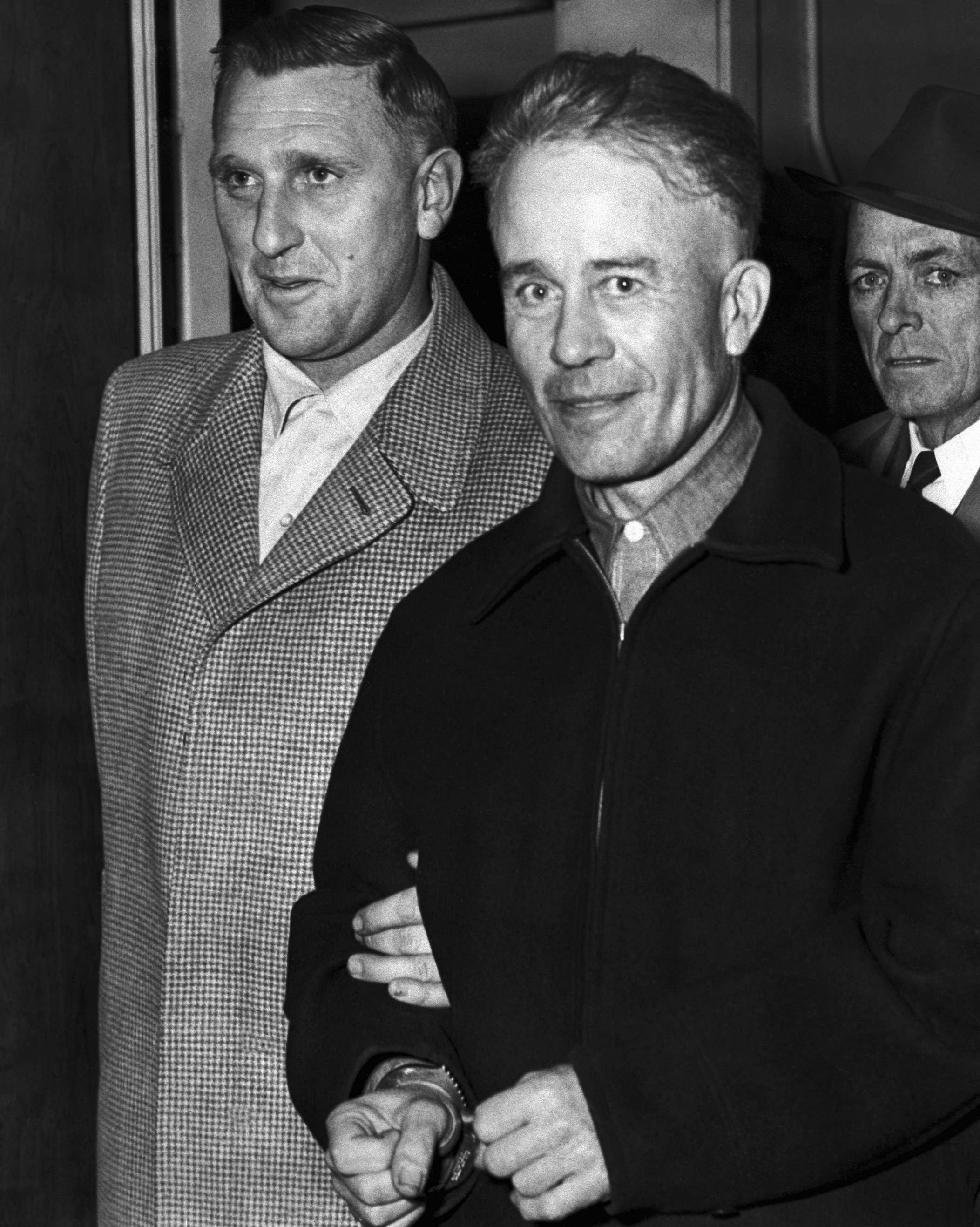
WARNING: 88 contains graphic descriptions of what was found inside Ed Gein's house. Proceed with caution or skip over it altogether.
88. Gein lived like a hoarder — the photo on the left shows what his kitchen looked like as investigators were searching the property. They discovered chairs upholstered with human skin, an unfinished suit made of human skin, masks made of human faces, and various household objects fashioned from bone, much of which he stole from a local cemetery (and this is only a small preview of what was found). There was also an entire section of his house that he never visited: The rooms that were once occupied by his mother before she died 12 years earlier (right photo). The doors to these rooms were allegedly nailed shut, and when investigators pried their way in, they found mostly furniture and dust.
89. In 1859, the Sun let loose a solar flare so large that it created a geomagnetic storm here on Earth called "the Carrington Event." This storm produced auroras in the sky (much like the Northern Lights but *way* farther south) so bright that you could allegedly read at night by that light alone. It also caused telegraph machines to break and, in some cases, shoot sparks and cause fires. It happened again in 1921, and if a similar storm hit us today — and scientists claim one certainly will, it's only a matter of when — it could cause catastrophic blackouts across the planet, destroy satellites, and generally disrupt our tech-reliant society in very significant ways.

90. No recordings of Abraham Lincoln's voice exist, but we do have some descriptions left behind from his contemporaries and it's probably not at all what you'd expect. One journalist said it was "a thin tenor, or rather falsetto, voice, almost as high-pitched as a boatswain’s whistle." Another noted its "frequent tendency to dwindle into a shrill and unpleasant sound.” His accent contained a bit of Indiana and a bit of Kentucky. Historian Harold Holzer told Smithsonian Magazine that, great orator though he was, "for the first ten minutes" his audiences "couldn’t believe [...] the way he sounded, his accent."

91. There's an extremely powerful force in the universe that's pulling us — along with the entire Milky Way Galaxy and many surrounding galaxies — toward it, and we have no idea what it is. It's simply called "The Great Attractor," and scientists can only describe it as a "gravitational anomaly." It exists somewhere beyond the stars and constellations pictured below, which prevent us from so much as catching a glimpsing of... whatever (or wherever) the Great Attractor truly is.

92. In 1959, in the small town of Lake City, South Carolina, nine-year-old Ronald McNair took a stand. He only wanted to borrow some books from the library, books on science and calculus that would foreshadow the great things he would go on to do with his life. But this was the Jim Crow South, and the librarian wouldn't allow it. Ronald, however, refused to leave empty-handed. The police were called to the scene — as was his mother, who promised to pay for the books if they weren't returned. Ronald McNair went on to become a brilliant physicist and astronaut, becoming the second Black man ever to travel to space. In 2011, the library where that determined nine-year-old boy took his stand was reopened as the Dr. Ronald E. McNair Life History Center.
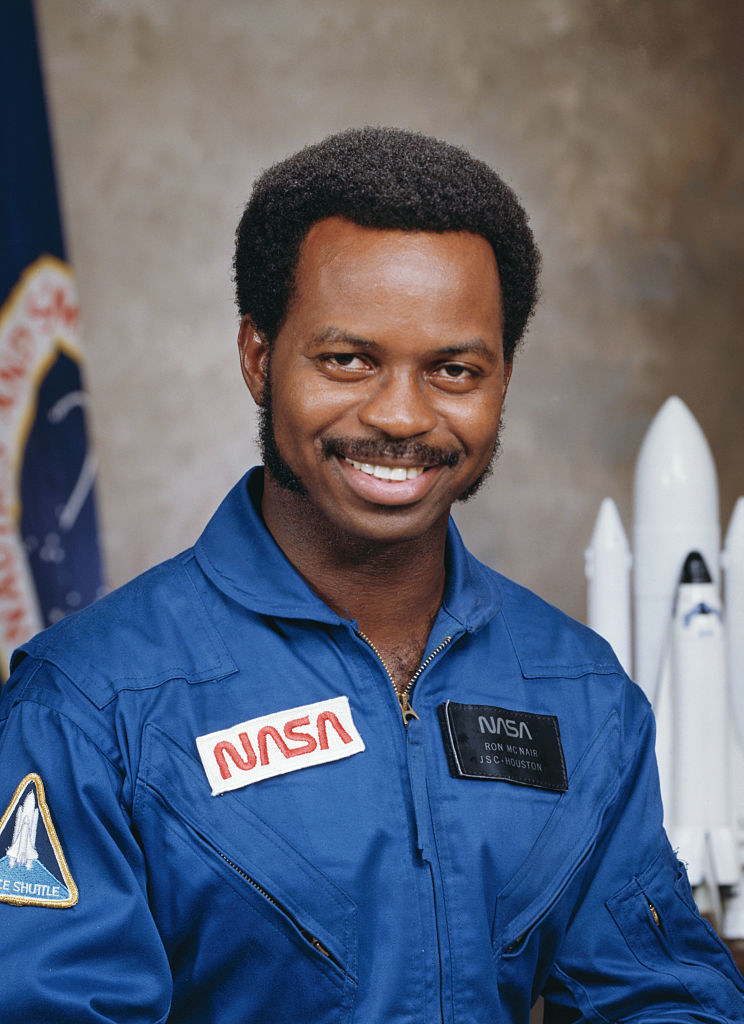
93. And this is Peggy Whitson, who, over the course of three separate missions, has accumulated a total of 665 days in space — more than any other NASA astronaut. She has spent so much time in space, in fact, that she had to retire after hitting NASA's limit for radiation exposure. But that's not stopping her from going back as a private citizen. Alongside GT race-car driver John Shoffner, she'll be piloting Axiom Space's Ax-2 mission to the International Space Station for an eight-day stay.

94. Though various cobra species are now protected by law in India, that wasn't always the case. Under British Colonial rule, the government attempted to eradicate these venomous snakes in Delhi by offering a reward for cobra skins. The result? People began breeding cobras just to collect the reward, and when the government discovered this they ended the program. When cobra skins suddenly lost their value, all those bred cobras were set free, which actually caused the population to spike. This phenomenon became known as the Cobra Effect, aka perverse incentive, and it refers to an initiative that's intended to solve a problem but that actually makes that problem exponentially worse.
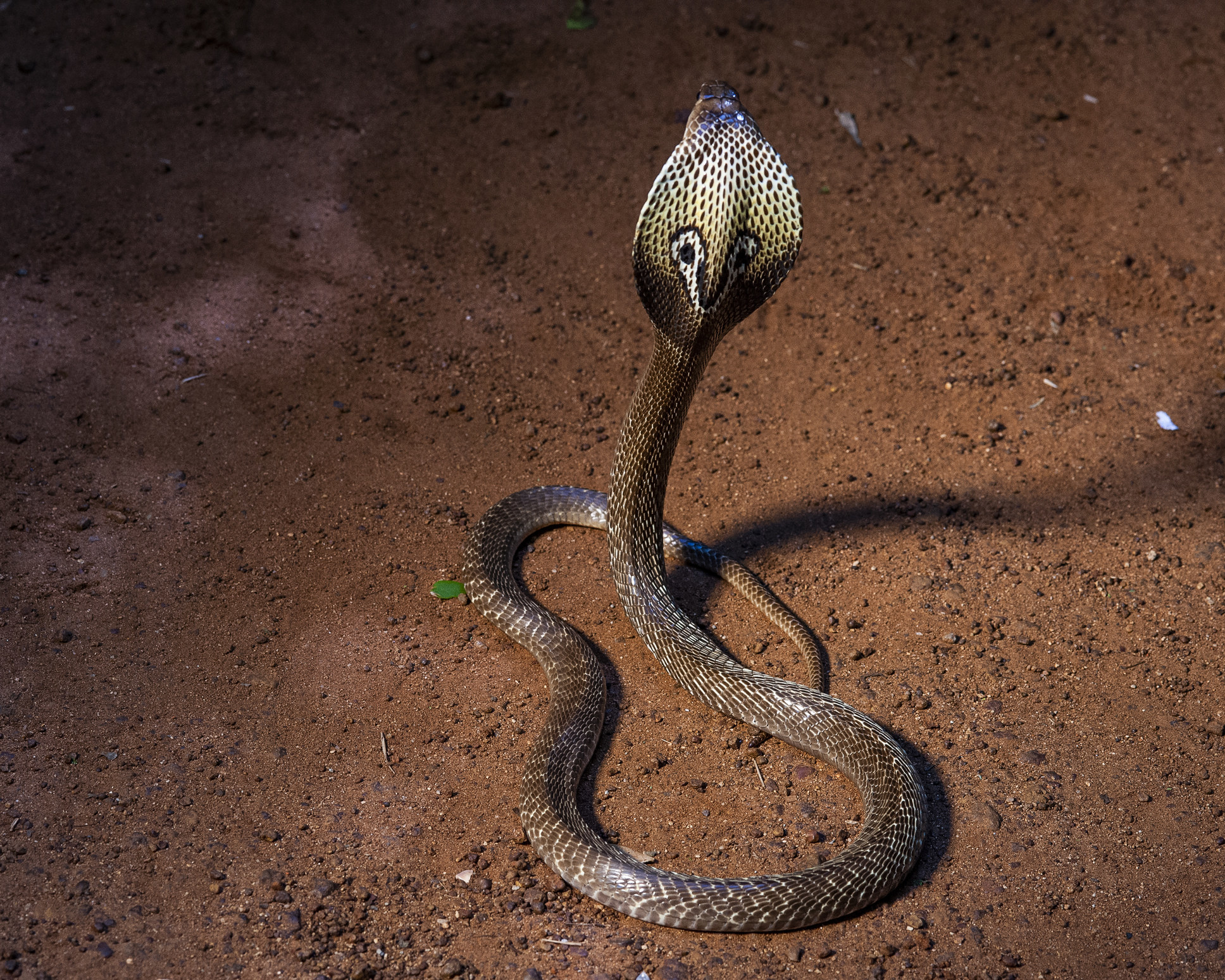
95. There are dozens of stories out there about legendary wrestler André René Roussimoff, better known by his stage name André the Giant. He was, after all, a larger-than-life figure in every sense, standing at 7 feet 4 inches tall (223.5 cm) and weighing 500 pounds (226.8 kg). One aspect of the man that really stood out to those who knew him was his drinking ability. Hulk Hogan claimed he saw André drink 108 beers in just 45 minutes, which some claim is an unofficial world record; Gerald Brisco said André would drink six bottles of wine before a match and "no one could tell."

96. When Pompeii was buried under volcanic ash after the eruption of Mount Vesuvius in 79 A.D., an otherwise typical day in the ancient Roman city was frozen in time — the most unexpected remnants of everyday life were eerily preserved for future generations to study. Take, for example, this 2,000-year-old loaf of bread that was found inside the oven of an excavated bakery:
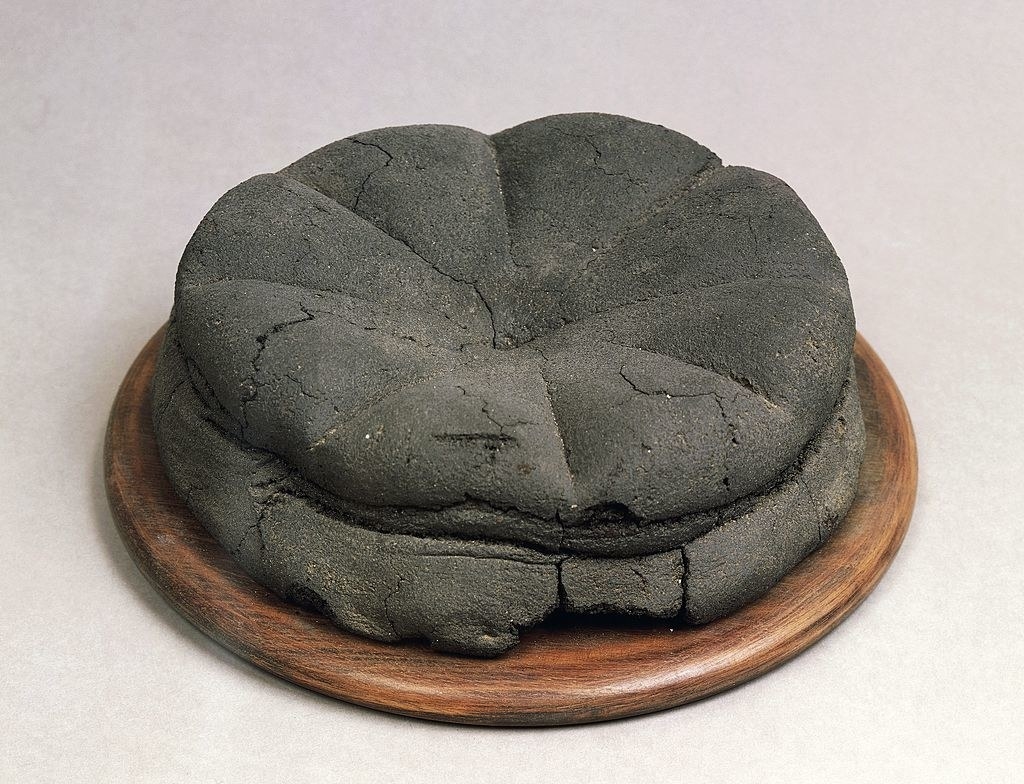
97. Mosquitos actually prefer some people's blood over others. According to one study, they were twice as likely to land on people who have Type O blood than Type A blood (Type B was in-between O and A in terms of popularity). Mosquitos also prefer to bite people who have been drinking alcohol, people who just finished exercising, and people who are pregnant — and these are only a few of the biological and circumstantial factors that make you more appetizing to these incredibly annoying insects.

98. The last words Albert Einstein ever spoke will never be known. According to his New York Times obituary, published on April 19, 1955, the only person present at the time of his death was a nurse who reported that "he mumbled in his sleep several words in German," which she didn't speak.

99. This is the bearded vulture, and they're the only animals in existence whose diet consists mostly of bones — and not just bone marrow; they eat the whole thing. What they'll do is take a bone and fly it really high up into the air and drop it (sometimes repeatedly), until it breaks into small enough pieces for them to eat. Their very strong stomach acid does the rest of the work.

100. In 2008, in a small town in western Japan called Kasuya, a man started to suspect that the food in his refrigerator was disappearing. He was so certain that this was happening — and so determined to find out why — that he installed cameras in his kitchen that he could monitor using his cellphone. Sure enough, after he left the house one day, the cameras spotted a woman rummaging through his fridge. He immediately called the police, and when they searched the house they found the woman curled up in one of the closets, where she'd been living, completely undetected, for *an entire year*.

101. In pretty much every city in the world, digging new subway tunnels for the metro is a difficult, time-consuming task. But perhaps nowhere is it more difficult than in Rome, Italy, where constant archeological discoveries set these projects back *literal decades*. Planning for Rome's Metro C line started in the mid-'90s, but construction didn't officially begin until 2007 — it's still not finished. As of 2018, this project has turned up over 40,000 artifacts. There are so many artifacts sitting beneath Rome just waiting to be discovered that some building owners have even started digging out their own basements to see what they can find.
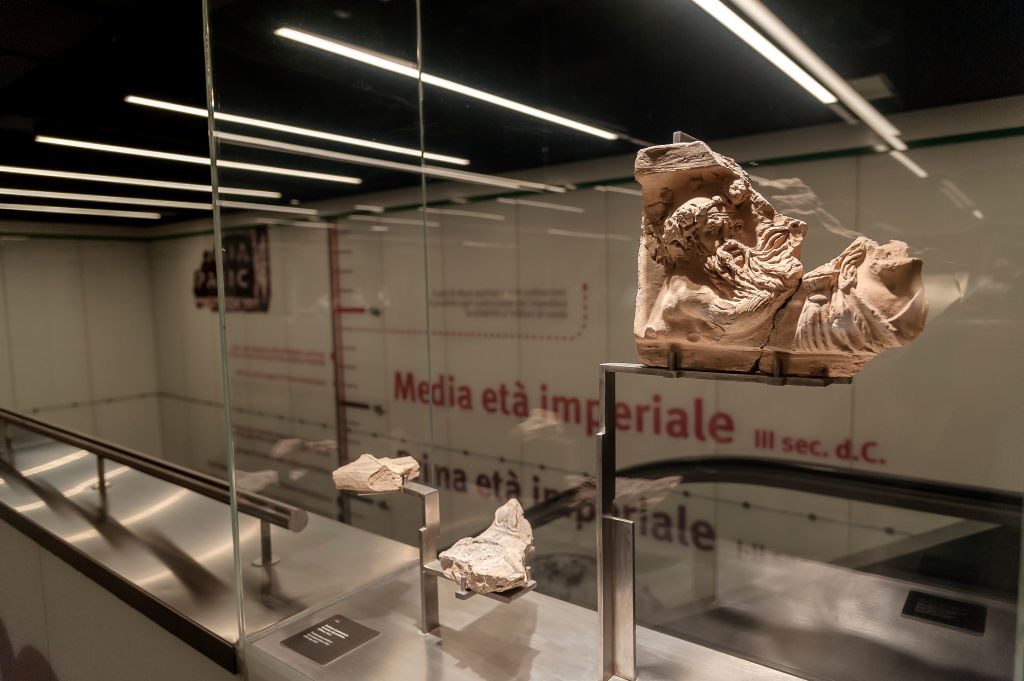
102. In December of 1799, 67-year-old George Washington got caught in a downpour of freezing rain and was soaked to the bone. The next day, he developed a fever and sore throat — serious symptoms at that time, especially for someone of his age. Doctors were eager to save the former President, and they turned to a treatment that's not very widely used today: bloodletting. Over the course of the next 24 hours, George Washington's doctors bled him — they bled him a lot. They reportedly drained about 80 ounces of his blood, an estimated 40% of his blood volume, and he died the following day.

103. Conservationists believed there were only three giant river otters left in Argentina — all three of which live in captivity. In the Argentinian wild they were thought to be completely extinct; giant river otters, which are listed as endangered on the IUCN (International Union for Conservation of Nature) Red List of Threatened Species, haven't been seen in Argentina since the 1980s, and they haven't been spotted in or around the Bermejo River in almost 100 years. So you can imagine his surprise when conservationist Sebastián Di Martino, who's hoping to reintroduce giant river otters back into the region, spotted one swimming in none other than the Bermejo River.

104. And the Galápagos tortoise wasn't just thought to be extinct in the wild or in a single nation; this species was thought to be lost forever. Lonesome George, who was the last Galápagos tortoise in captivity, died in 2012 at the age of 152, and they haven't been sighted in the wild since 1906 — until now. In 2019, a female tortoise was discovered on Fernandina Island and genetic testing has finally confirmed that she is indeed a member of the species Chelonoidis phantasticus. Researchers estimate that she's over 100 years old.
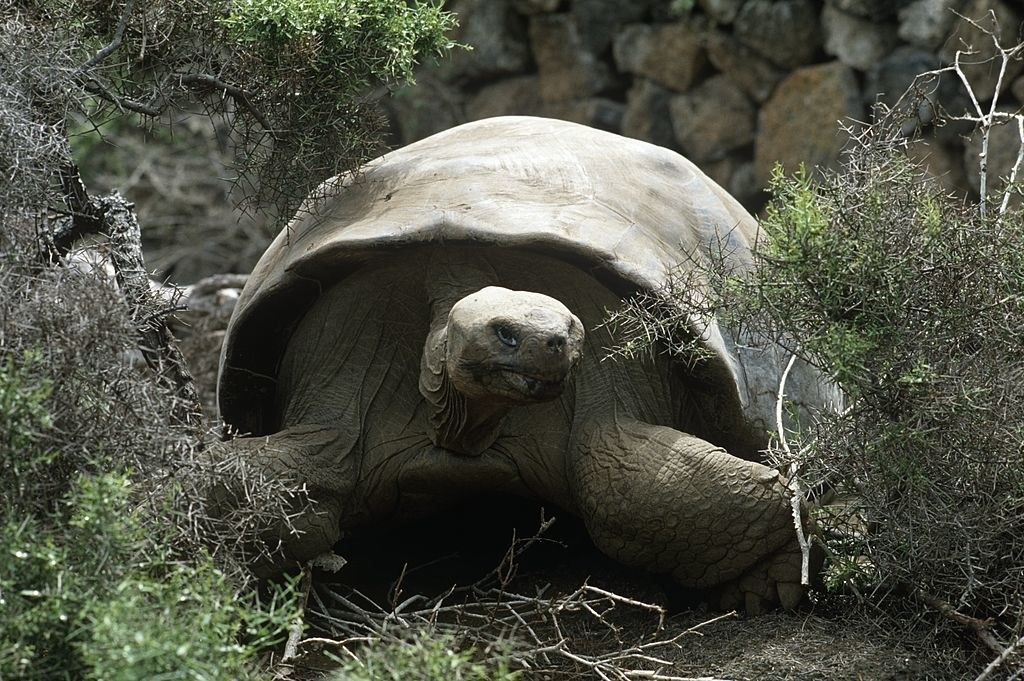
105. In 1951, Henrietta Lacks was diagnosed with terminal cervical cancer and went to The Johns Hopkins Hospital for treatment. While she was there, cells were taken from her cervix — without her permission — and brought to a lab for study, and what they found astonished researchers. Instead of dying, like past samples collected from other patients, Henrietta's cells not only survived, they multiplied. She died at the young age of 31 later that year, but her cells (which are called HeLa cells, named for her) would revolutionize cancer treatments and the entire field of immunology. They're still used for research today. In fact, they were even used in the development of the COVID-19 vaccines.
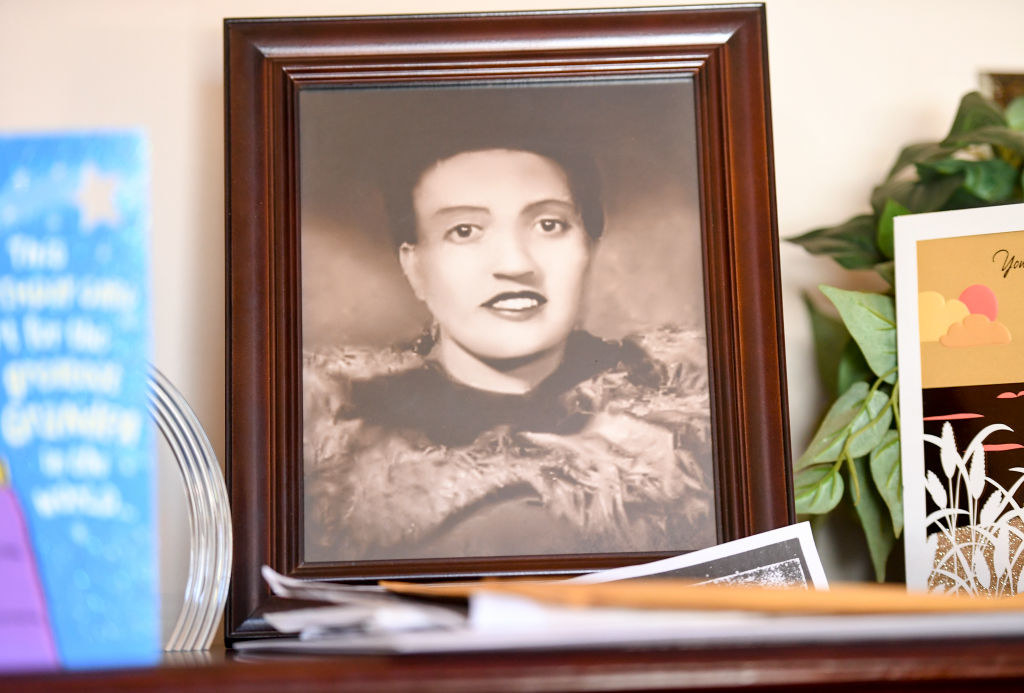
106. Don't worry! Some random accident didn't knock these cacti over; this is all part of their natural lifecycle. They're called creeping devils, and though they grow vertically when they're young, eventually they get too heavy for their base and fall over. The base will eventually die, but the tips will continue to grow, creeping across the desert just as their name suggests.

And last but most certainly not least (unless you mean in terms of size), a frog fact:
107. This tiny frog (sitting a US dime for scale) is called a paedophryne amauensis, and it's not only the smallest frog in the world, it's also the smallest vertebrate:
